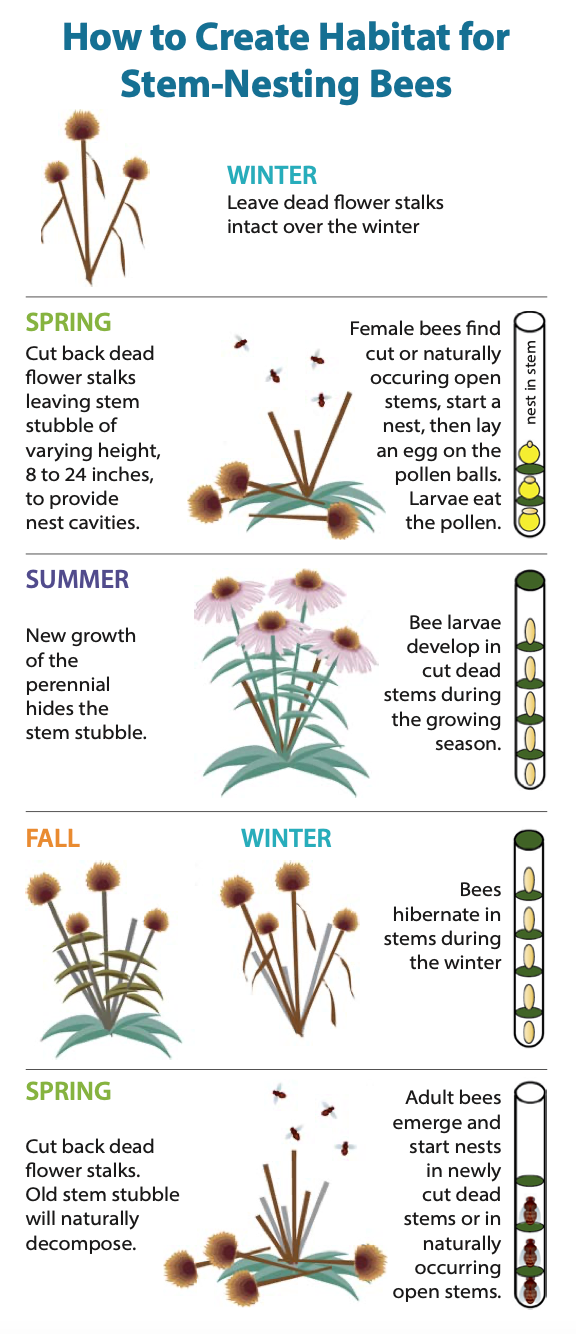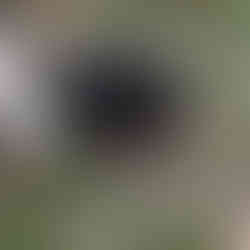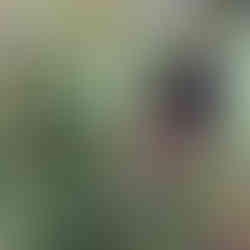What not to do (in your yard) this fall
- Carey Murphy

- Oct 13, 2022
- 3 min read
How skipping some traditional landscaping practices can increase our much-needed pollinators and support wildlife
I have just spent an insane amount of time dethatching my lawn and aerating by hand, and I’m still not finished. (Dethatching removes dead grass so new seed makes good contact with the soil which helps germination; mine had accumulated for 10 years). My shoulders ache and I have blisters all over. But I do have 6 paper bags destined for the recycling center and a lawn full of scattered soil cores – which a flock of robins just discovered.
This was not my original plan for revitalizing our grass. And as I sit down to take a much-needed break, I decide to add one more thing on my "What Not To Do in Fall" list. This is a list that keeps growing as scientists raise the alarm about the impacts of our traditional landscaping practices on wildlife.
By not doing the following, you’ll save time and lives.


Why?
Creatures of all kinds wait out winter in and amongst fallen leaves and garden plants. Some caterpillars drop from the canopies of our native trees to nest in the ground. Some butterflies, like the Mourning Cloak, hibernate as adults within the leaves. While others spin their chrysalises and cocoons and try to stay camoflauged in leaves or on plants. Also in the blankets of leaves are lightning bug larvae, salamanders, frogs and more.
If we attract insects and other wildlife to our native plant gardens in the spring and summer, we should also make a plan for their winter hideaways too.
Instead, Do This!
Leave the Leaves
Instead of bagging up all of your leaves or chopping them up with a mower, consider instead:
Leaving them in a thin, scattered layer on your yard (too thick can smother your grass)
Raking them into your garden beds
Raking them into a designated leaf zone
Leaving them under trees so you can create a soft landing for insects
Leave the Stems
Many birds and small mammals will eat seeds from plant stalks throughout the winter. If you avoid the typical fall "clean up" and leave your stems of black-eyed Susans, coneflower and goldenrod, for example, you will be sure to attract goldfinches, chickadees and more. Grasses like Little Bluestem are a source of both shelter and food.
Most of our native bees live only a few short weeks as flying insects; they spend most of their time developing from eggs to larvae to pupae to adults. Thirty percent of our native bees are cavity nesters and will often seek out hollow plant stems (the others nest in the ground). The solitary female bees lay eggs on top of pollen balls - which they have collected from their preferred plants - within chambers in the stems. The bee larvae will develop throughout the growing season and overwinter in the stems.


Lose more Lawn and Go Natural
Each year I have less lawn as my native plant gardens and trees expand, but still have quite a bit to manage. I am still perfecting the natural approach, which will be different for every lawn and will change over time. This fall, I'm following the suggestions from a recent soil analysis from the University of Delaware and adding specific nutrients that will benefit the soil and promote root growth. While aerating and overseeding with tall fescue seed in the fall is standard operating procedure for our region, it's best to rent a mechanical aerator and dethatcher, if you have a large space. Trust me! Check here for previous blogs on low-impact landscaping and the problem with pesticides.
Come Spring!
If you have accomplished the What Not To Do In Fall list, you will be rewarded with more visitors to your yard.
For the first time last spring, I observed brown thrashers tossing leaves with their long beaks. I regularly see evidence of small bees nesting in old flower stalks (look for the "dust") and signs of metamorphosis are everywhere.
A successful winter could mean more sparkly summer evenings, as lightning bugs signal for mates. And there will be more generations of pollinators like small carpenter bees. Since one out of every three bites of food we eat is courtesy of our pollinators, to sustain them is to sustain ourselves.
Thank you for resting this fall!
Resources
Leave the leaves from the Xerces Society
Nesting & Overwintering Habitat (detailed fact sheets)
What To Do In Spring from the Xerces Society
Life Cycle of a Mason Bee and How to Build a Bee Nest
More information on natural lawns:























Comments